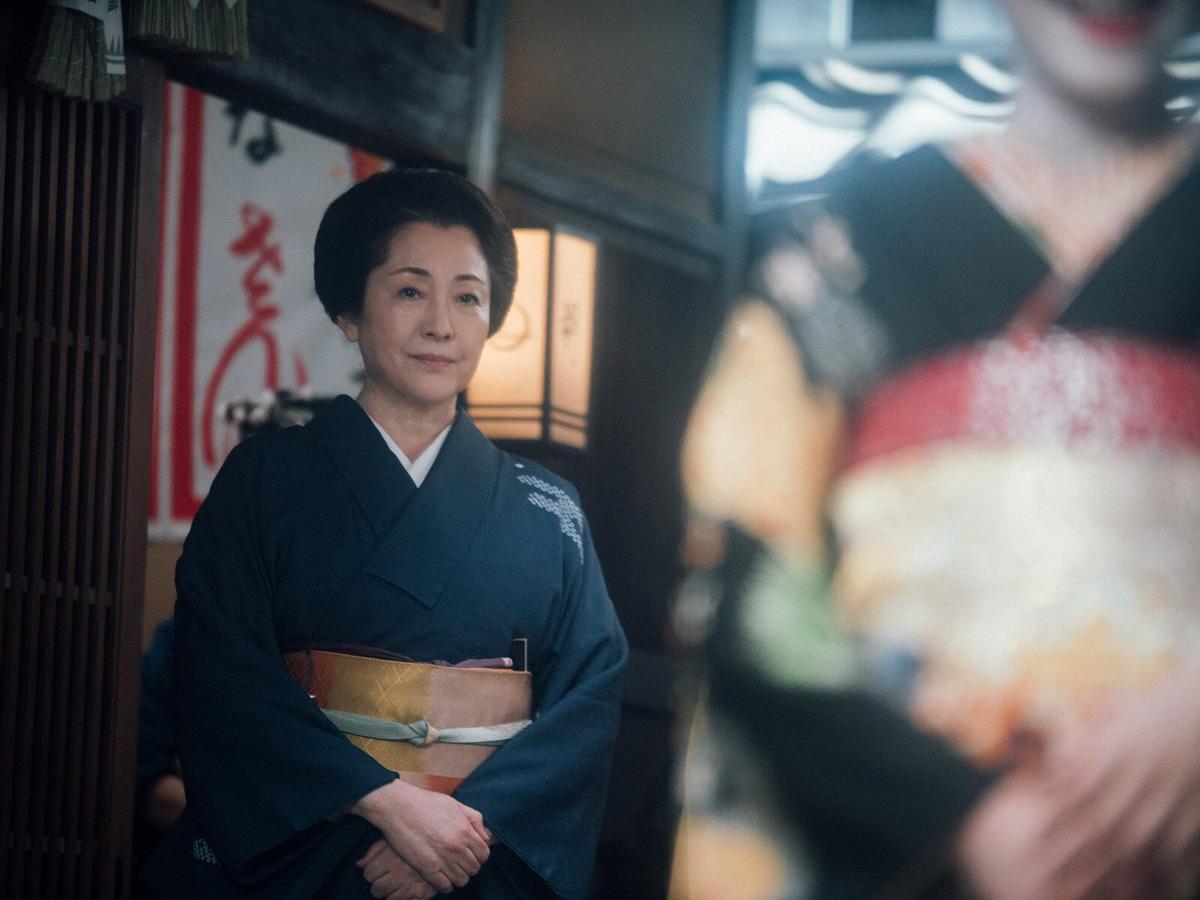‘The Makanai: Cooking for the Maiko House’ series review: A gentle comfort watch about female companionship

A still from ‘The Makanai: Cooking for the Maiko House’
In the first few lines of her International Booker Prize-winning novel, Tomb of Sand, Geetanjali Shree writes, “Once you’ve got women and a border, a story can write itself.” A similar thing can be said for stories on our screens; once you’ve got women and their friendship to explore, a compelling television show can make itself.
In his Netflix show, The Makanai: Cooking for the Maiko House, Hirokazu Kore-eda tells the story of a coming-of-age friendship between two teenagers. However, by also extending the lens to other women characters at different stages in their lives, Kore-eda expands the scope of the show to encompass a deeper understanding of the relationships women form with each other.
On a particularly snowy day, Kiyo (Nana Mori) and her best friend Sumire (Natsuki Deguchi) board a bus from their small town of Aomori to go to Kyoto, where they wish to train to be a maiko. A maiko can be described as a geiko in training, an apprentice. While Sumire quickly picks up the skills required to be a maiko (which involves everything from playing instruments, to dance and even floral arrangements), Kiyo sticks out among the rest of her peers. A little less delicate in her dance, and a more forthcoming than shy, Kiyo is soon told that she lacks the ambition for becoming a maiko. The viewers, and Kiyo herself, later realise that she is not beyond learning intricacies, only that her talent lies somewhere else. After a night when Kiyo gets to cook for the residents, she is immediately designated the ‘makanai’, a cook for the maiko house.
The Makanai: Cooking for the Maiko House (Japanese)
Director: Hirokazu Kore-eda
Cast: Nana Mori, Natsuki Deguchi, Takako Tokiwa, Ai Hashimoto, Mayu Matsuoka, and others
Episodes: 9
Storyline: Best friends Sumire and Kiyo move from their small town of Aomori to Kyoto to train to become a maiko. However, Kiyo soon discovers that she might not be meant to be a maiko
Wrapping up this whole affair by the second episode, the rest of the nine-episode show pans out in a gentle slice-of-life manner.
With his focus on the friendship between Kiyo and Sumire, Kore-eda also folds in other characters to their story. As Sumire begins her training as a maiko, and Kiyo settles into her role as a makanai, other aspects of this very specific way of life come to light. The viewers get a peek into life as a maiko, where you are not allowed to use cell phones, cannot go to the convenience store because of how your hair is done up, and must eat food in specific portion sizes to maintain the makeup. The final step in becoming a maiko (or a geiko) involves donning the delicately-designed kimono, which is complimented by the traditional hairstyle, and the distinctive makeup. The professional life of a maiko is a performance — it is marked by an artifice that is put on — therefore Kore-eda’s decision to spend more time behind this artifice pays off.

A still from ‘The Makanai: Cooking for the Maiko House’
We see the maiko trainees huddled up in their pyjamas, eating the food prepared by Kiyo, and lament about the hairstyle getting in the way of a good night’s sleep. In the subsequent episodes, Sumire is assigned to train under Momoko (Ai Hashimoto), a geiko who is at the peak of her profession and is contemplating future steps. Meanwhile, Yoshino (Mayu Matsuoka), a former geiko who left after getting married returns to the maiko house to give it a second try. In depicting these women at different points in their maiko journey, Kore-eda allows for an exploration of these characters beyond their profession.
The multiple individual stories of different maikos are foregrounded by the combined one that is shared by Sumire and Kiyo and the food they enjoy. Between the baked sweet potatoes they shared on the backseat of their from Aomori, and the Karaage chicken that Kiyo prepares for Sumire the night before her debut, their friendship blossoms into something stronger that serves as a source of comfort away from home, for both. As they both fit into roles more suited to their inner selves, they reach the conclusion that being a maiko was always more Sumire’s dream, which Kiyo came along on and eventually found her own individual path.
In The Makanai, Kore-eda offers us many stories of the women of the maiko house in Kyoto, and the way these women, at multiple points in their life come-of-age, embark on new beginnings and embrace old friendships. However, a key aspect of this life remains primarily absent in the show, and is barely touched upon. While interacting with and performing for an audience of mostly men, the difficult times these women and teenagers training as maiko go through is only given small mentions. When 16-year-old Sumire’s father raises concern about her being part of a job that involves serving alcohol, it is quickly allayed by a promise that this particular maiko house does not offer this service. Though Kore-eda wanted to create a show that focuses more on the personal aspects, inserting a more serious discussion about the safety and well-being of the young women would have lent the show a more grounding effect.
Through slow episodes, cooked over a whole year at the makanai house and served with the warmth felt while sharing peeled oranges with your grandmother, Kore-eda delivers a relishable comfort watch about female companionship.
The Makanai: Cooking for the Makanai House is currently streaming on Netflix
For all the latest Entertainment News Click Here
For the latest news and updates, follow us on Google News.
